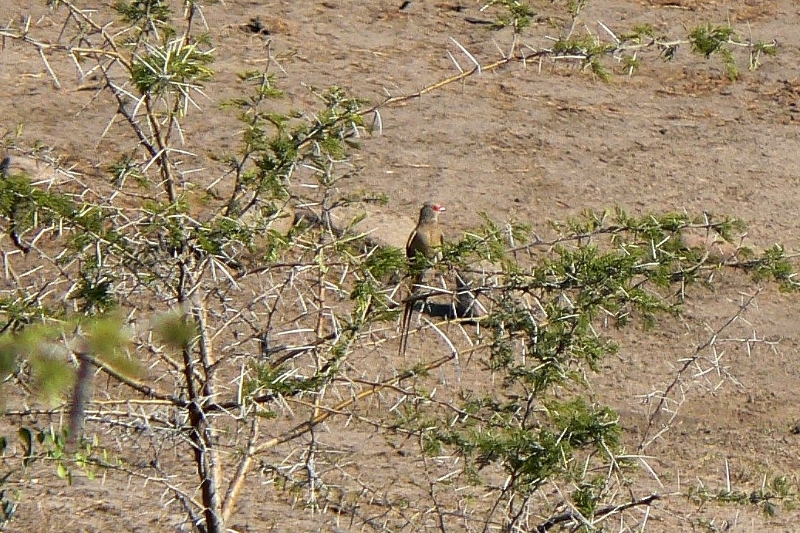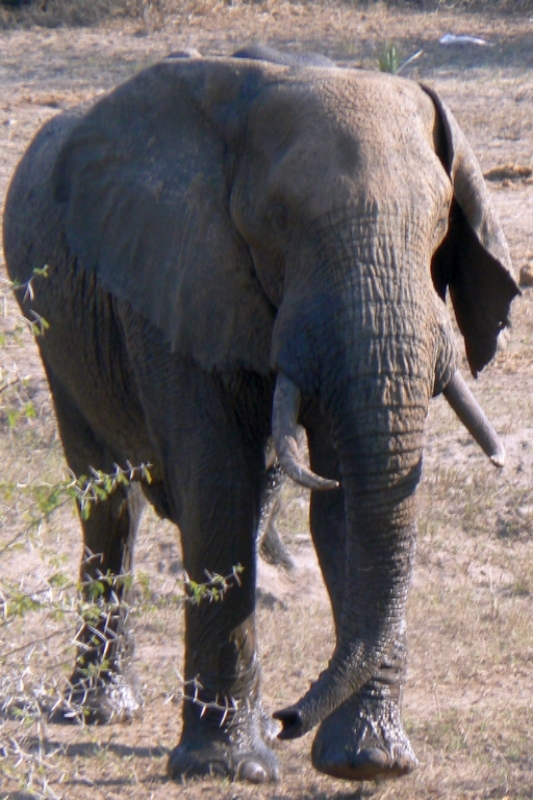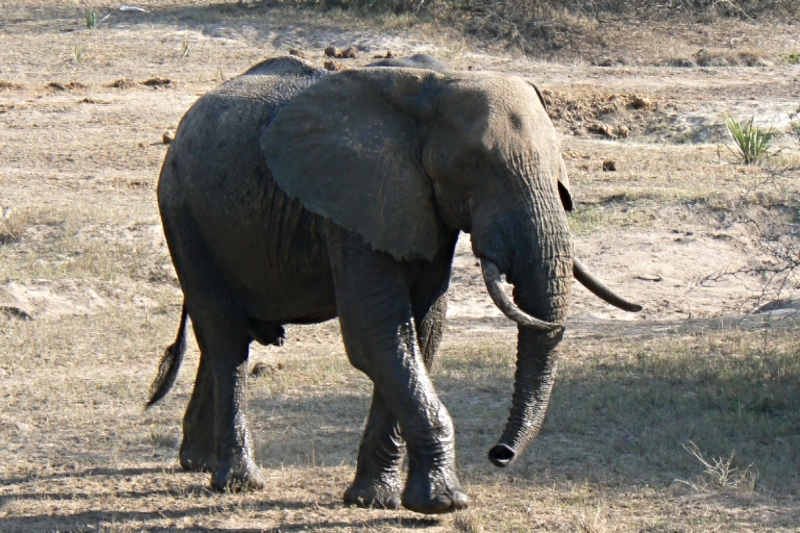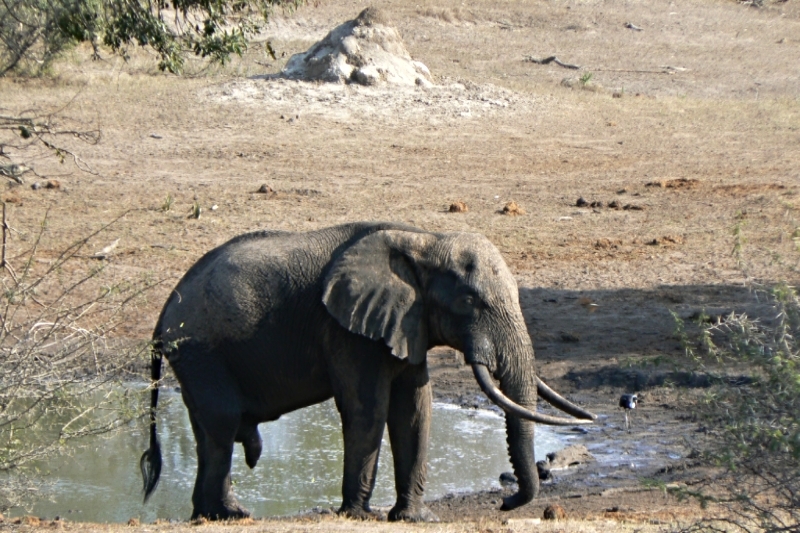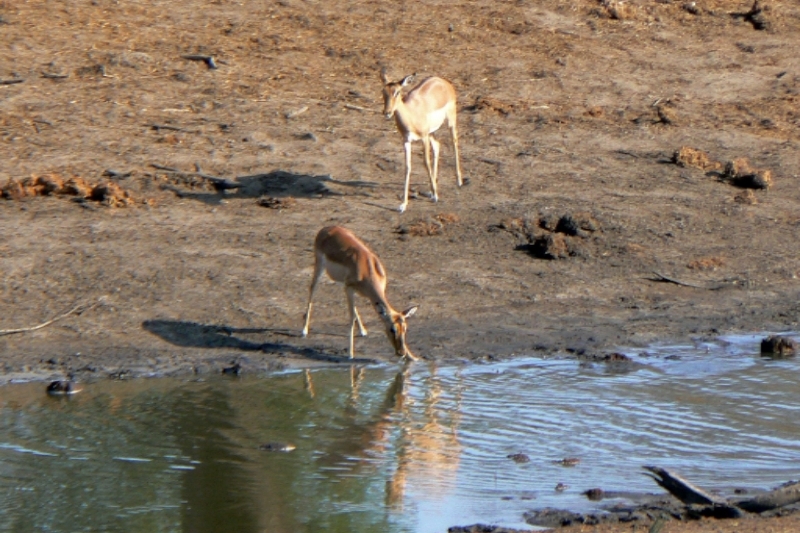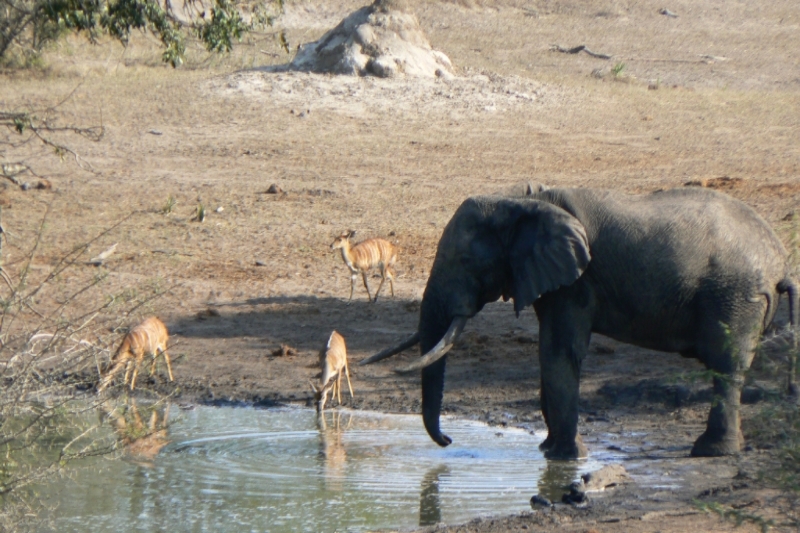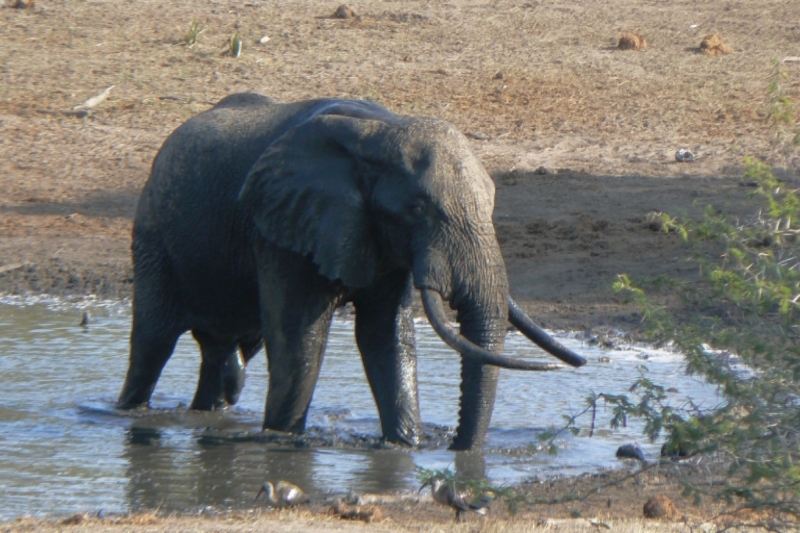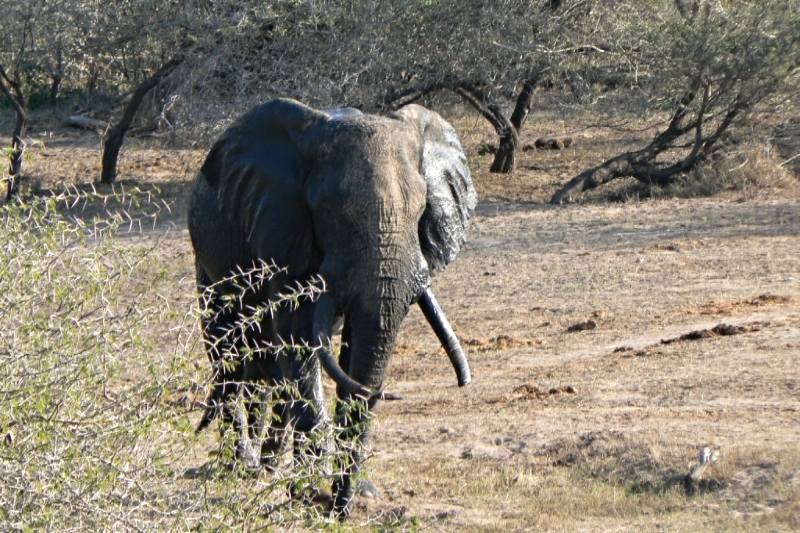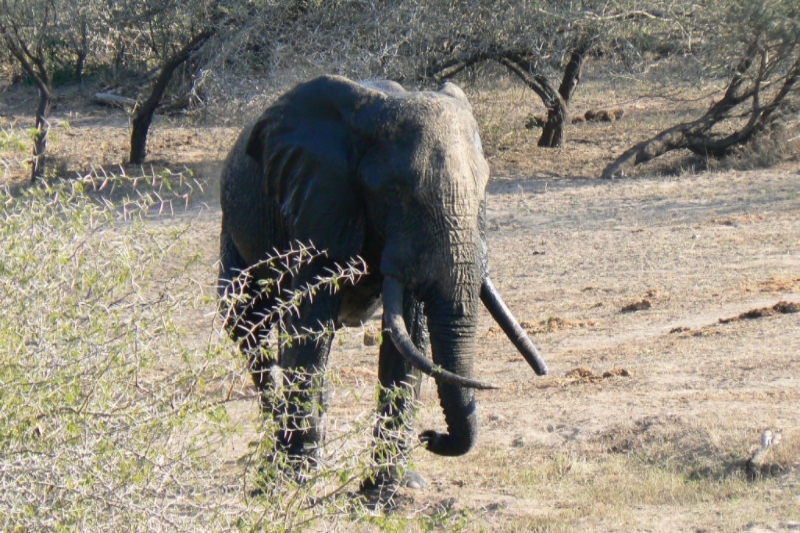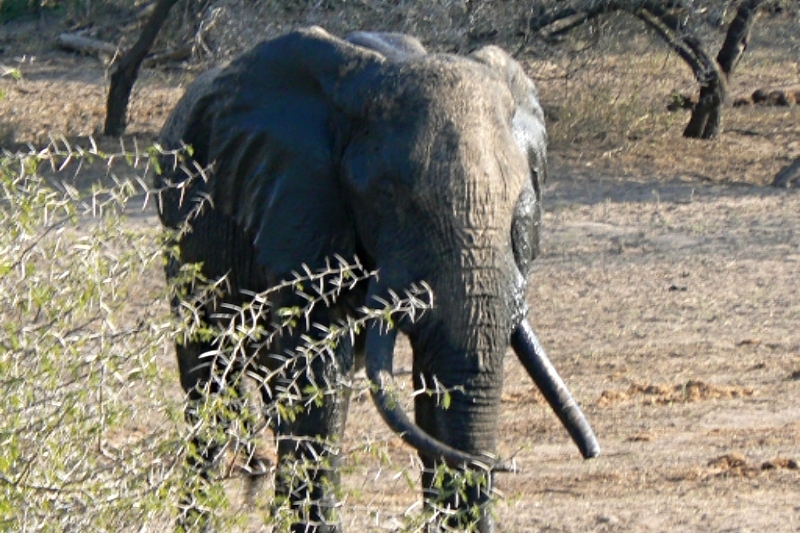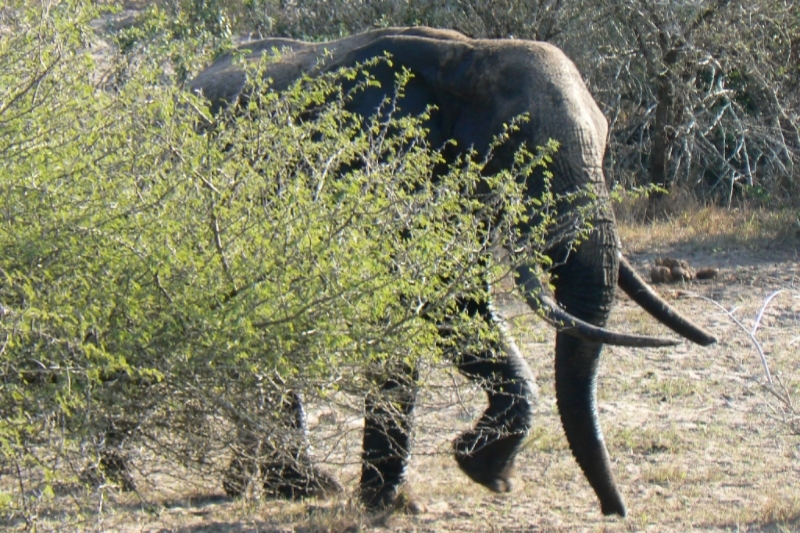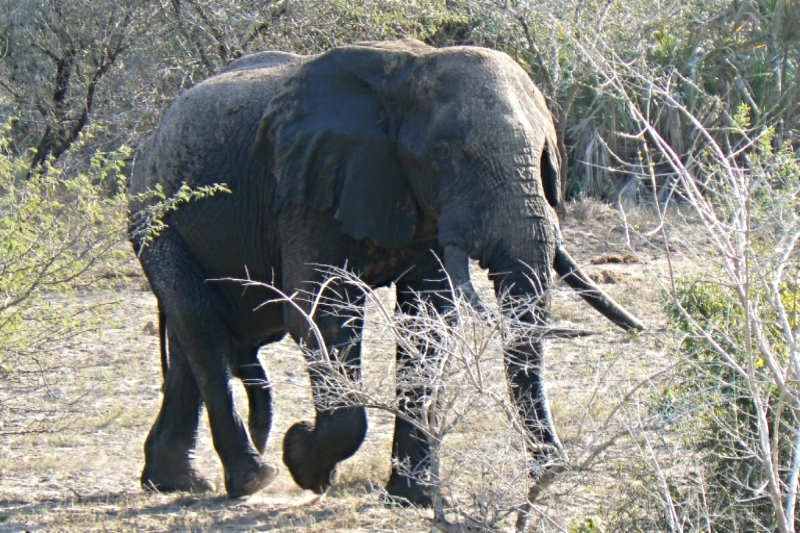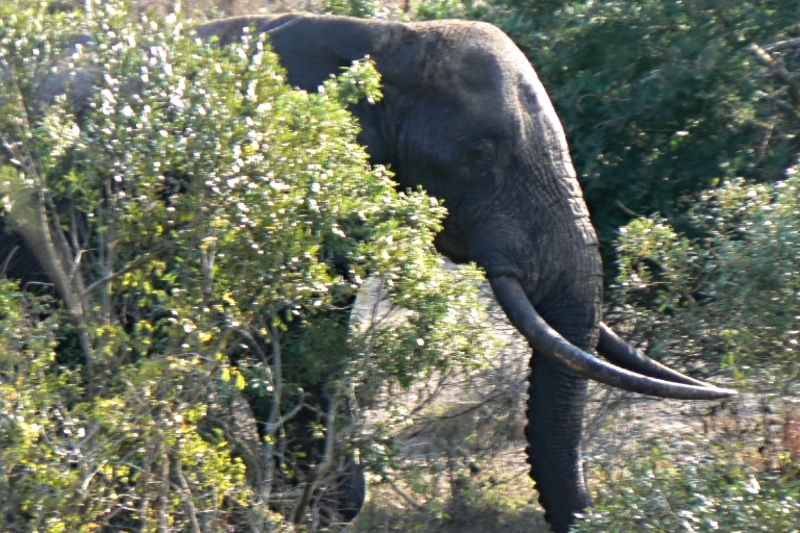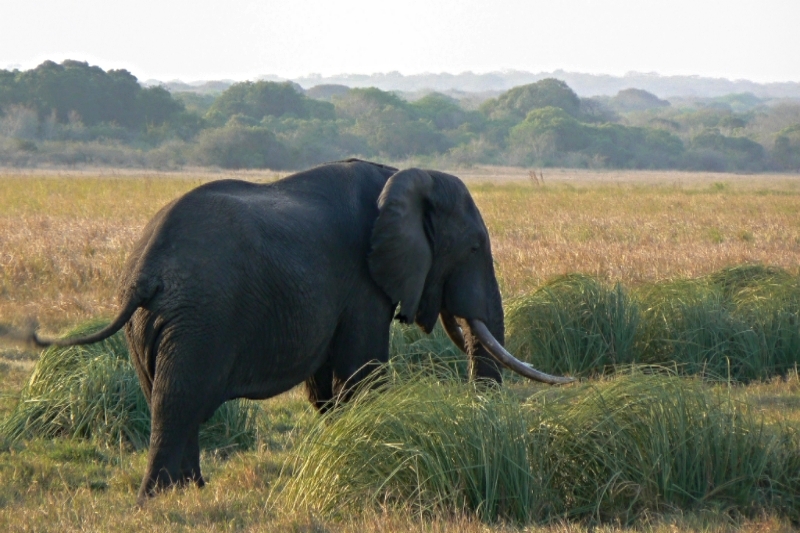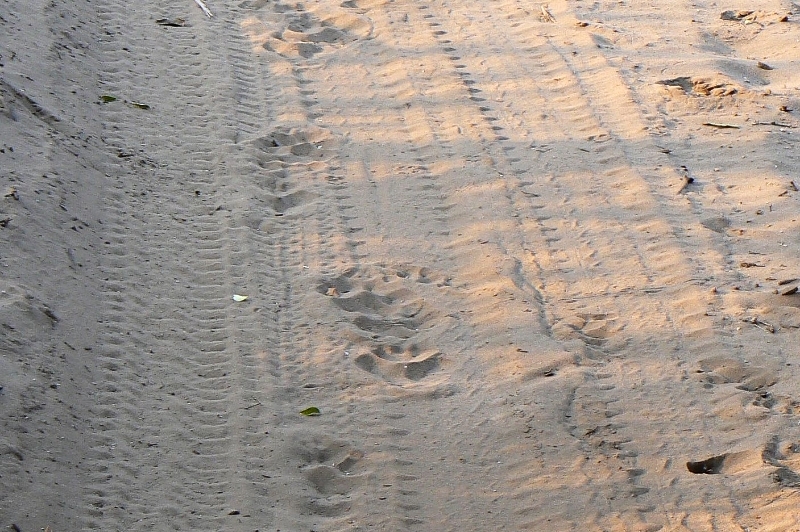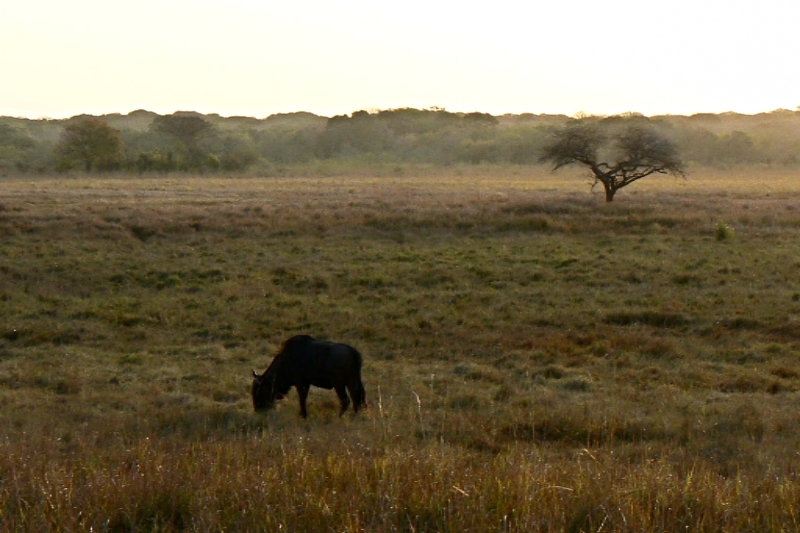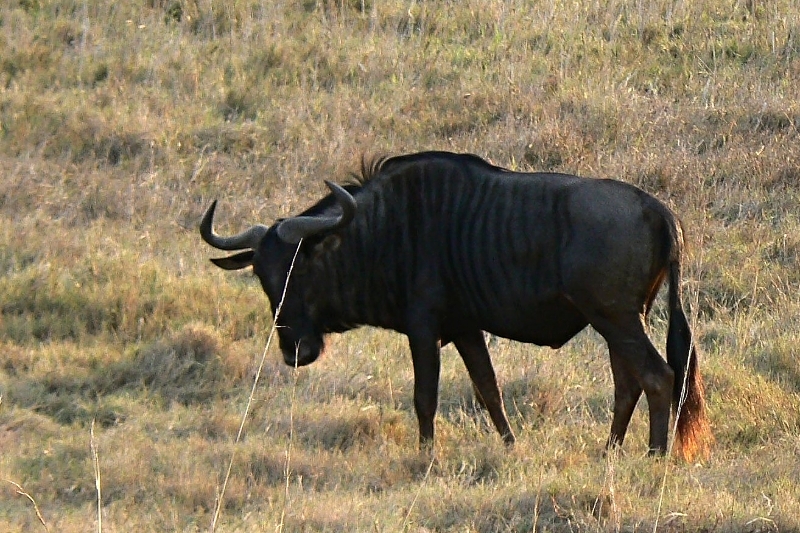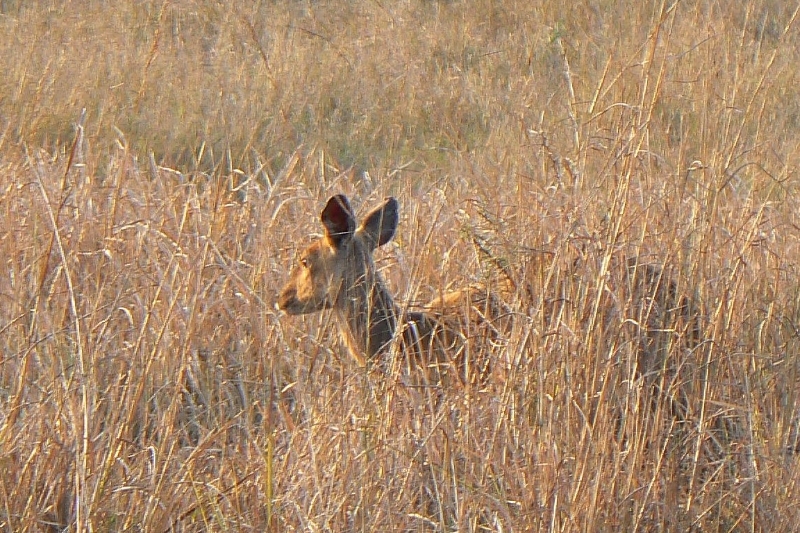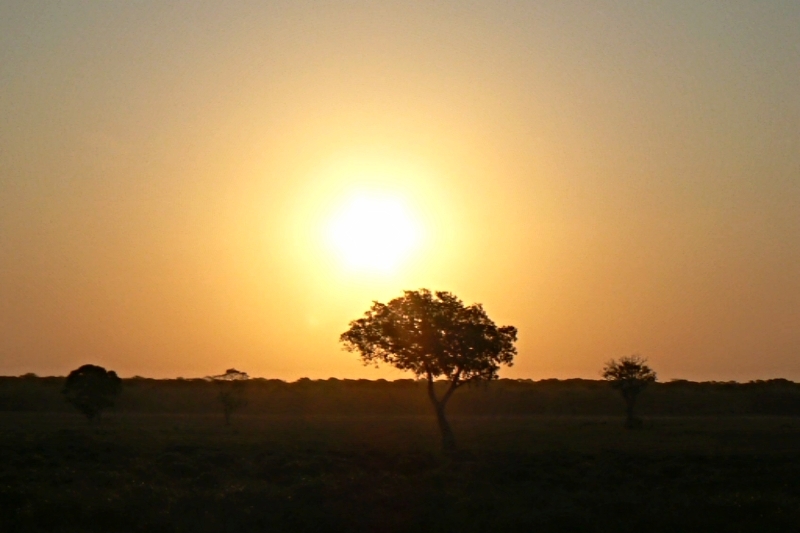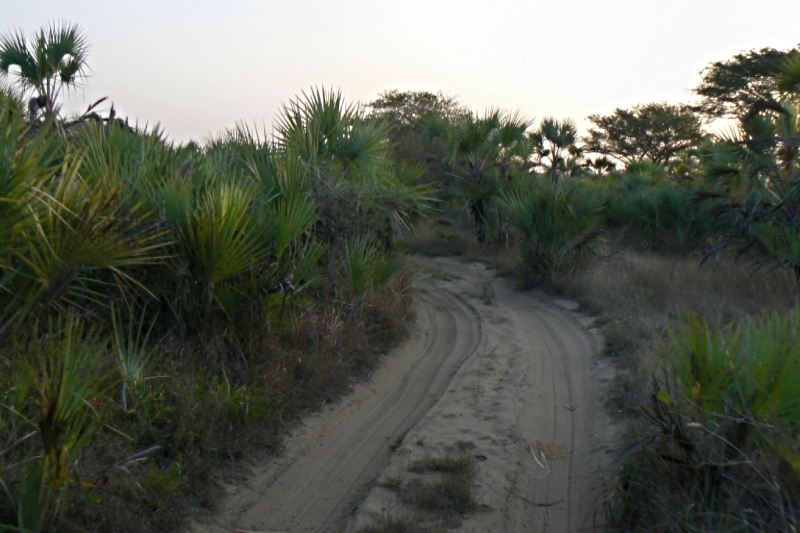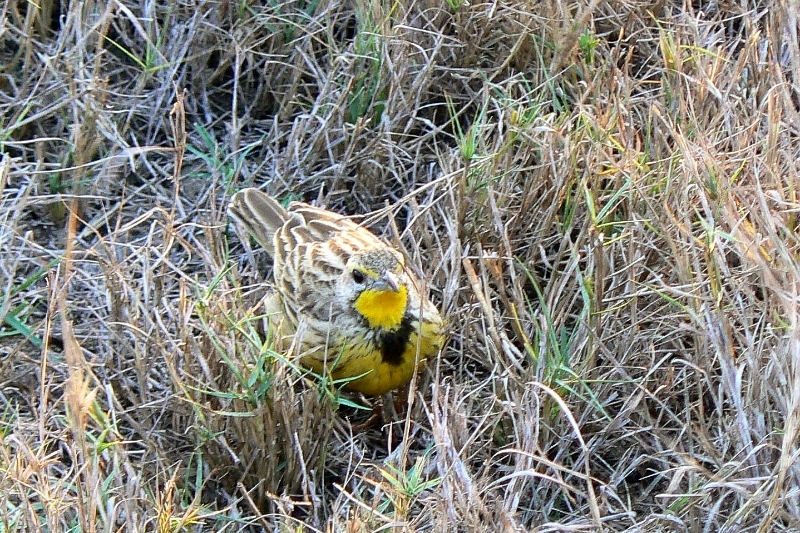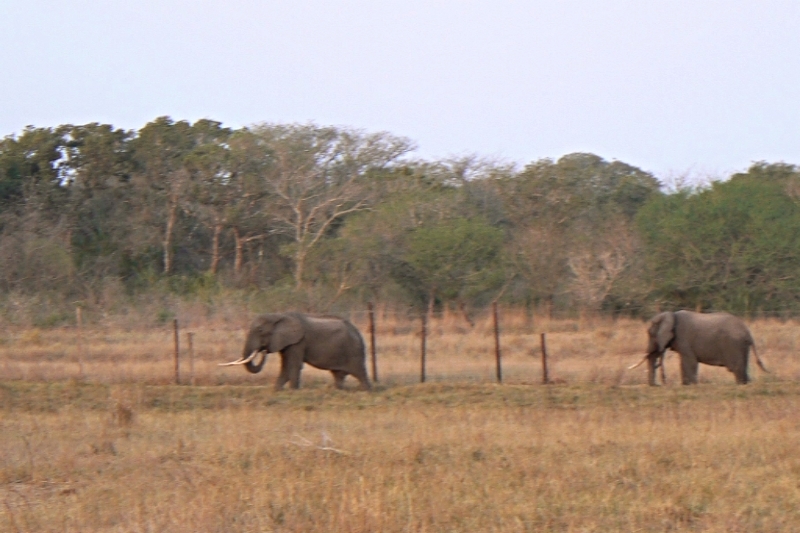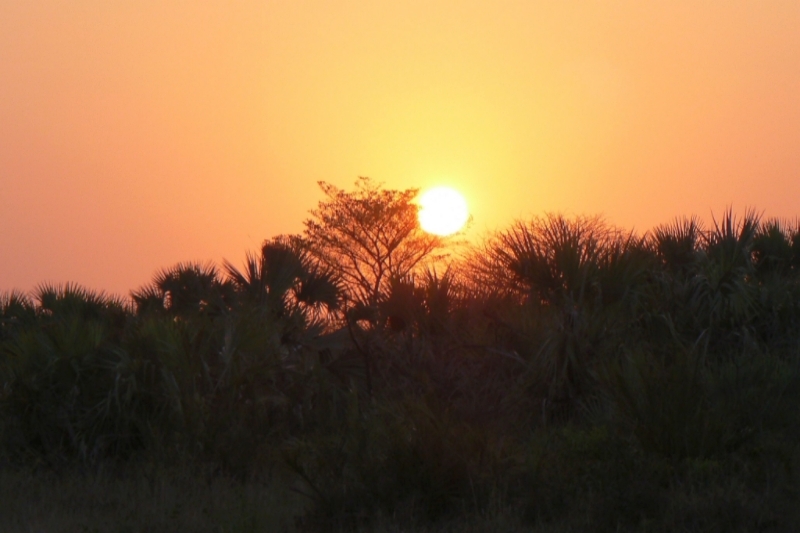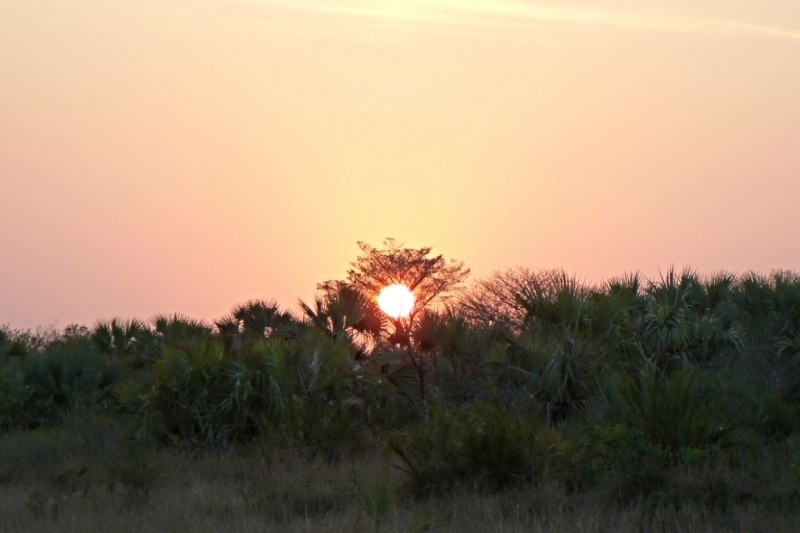The elephants left the spot, so it was time to move, too.
This is the crown of a Silver cluster-leaf(Terminalia sericea) and it's in late winter when the new hairy, silvery leaves appear. Only then some browers will feed on the leaves, but its foliage has generally low nutritional value.
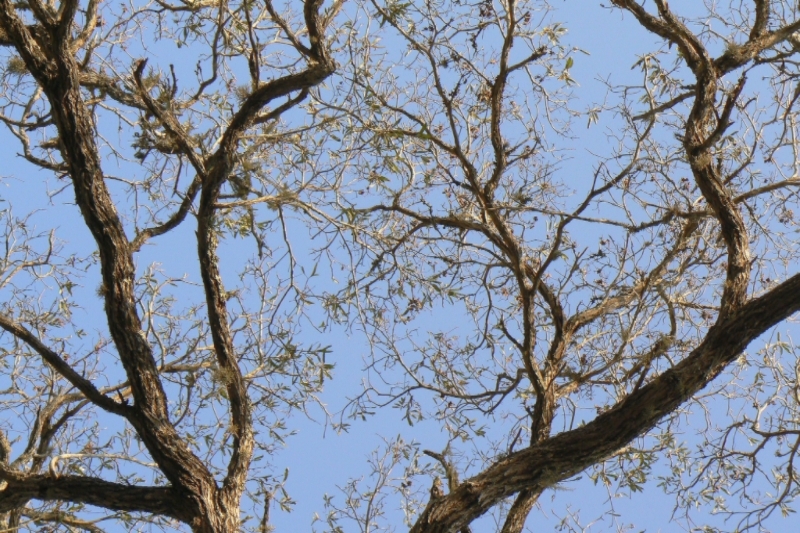
This tree is however special. Elephants love it to bits.

When the bulls leave the pan, they usually take a mud bath and sand shower for their sensitive skins. And then they go for their favourite scratching tree and the sand and acts as a useful substance to help dislodge the bothersome ticks when the bull rubs itself on the rough bark

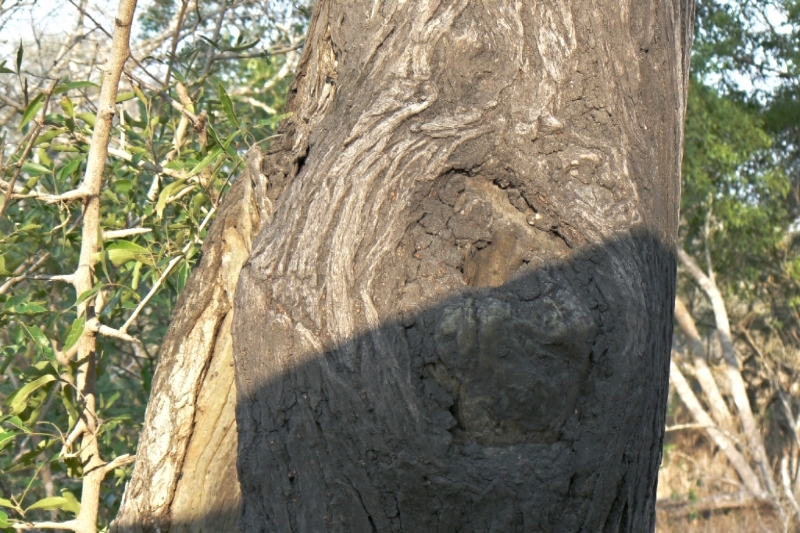
Lots of smashed ticks here on the tree
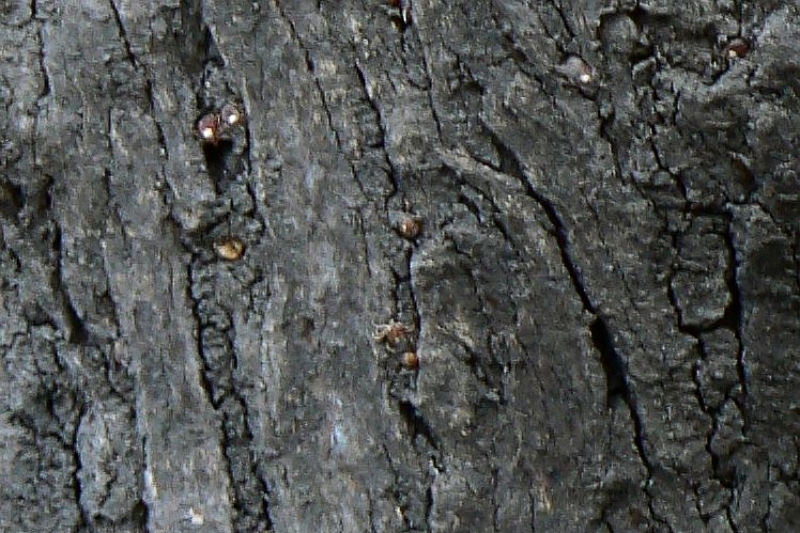
The other pan is not busy in the late afternoon, only some blurred nyala there
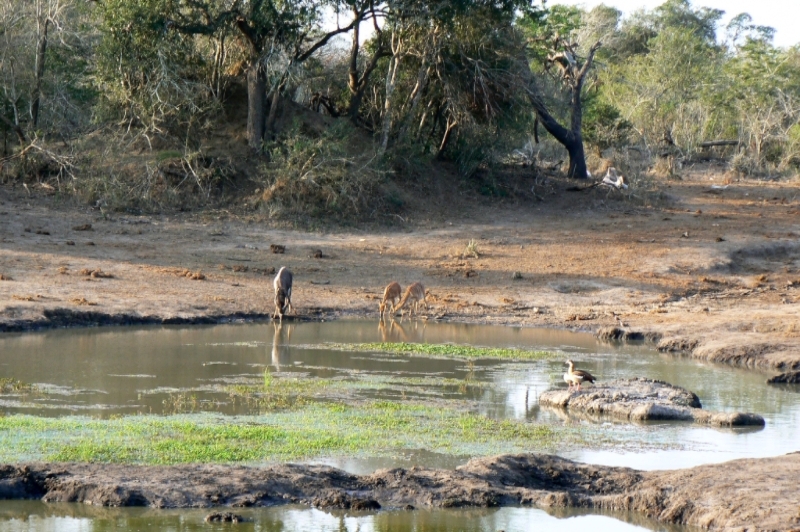

Tembe is one of the very few places where you can find the endangered
Warburgia salutaris 
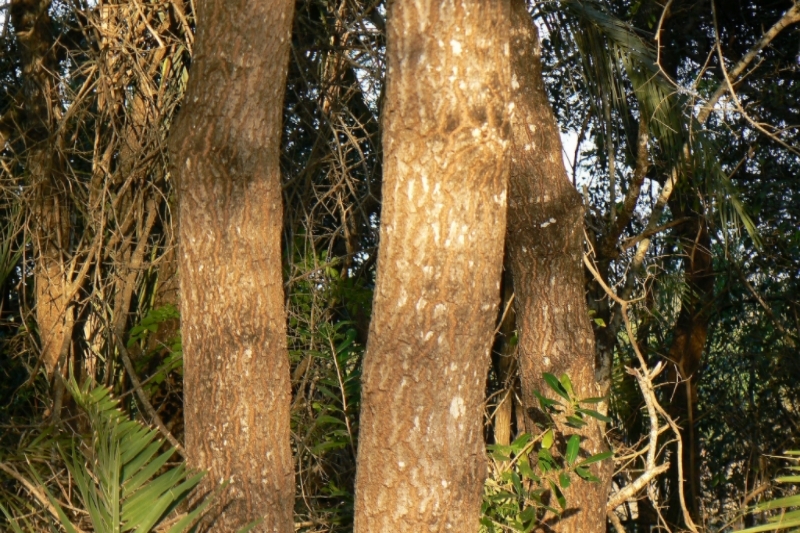
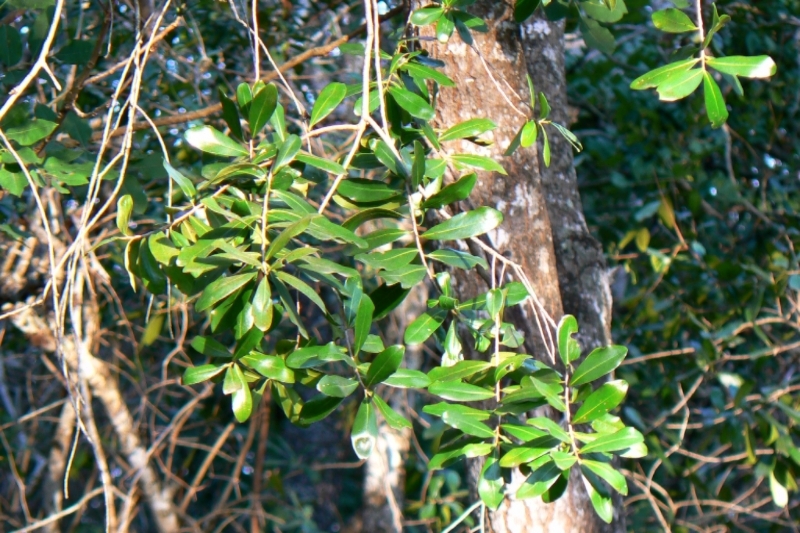
The genus Warburgia, was named after Dr. Otto Warburg (1859 to 1938) a lecturer in botany at the University of Berlin and author of several botanical papers. The species name salutaris means ‘health giving’, presumably referring to its medicinal properties. Most traditional remedies of Warburgia salutaris are made from the inner bark of the tree, which smells of cinnamon and the sharply pepper tasting bark and leaves contain a variety of compounds that have useful antibacterial, anti-fungicidal, anti-ulcer and diuretic properties.
The Pepper-bark Tree of southeastern Africa, is now endangered in the wild because of heavy harvesting of its much sought-after bark for traditional medicine. Apart from some remote populations, the tree is extremely hard to find in the wild and is on the border of becoming extinct through much of its natural range.

